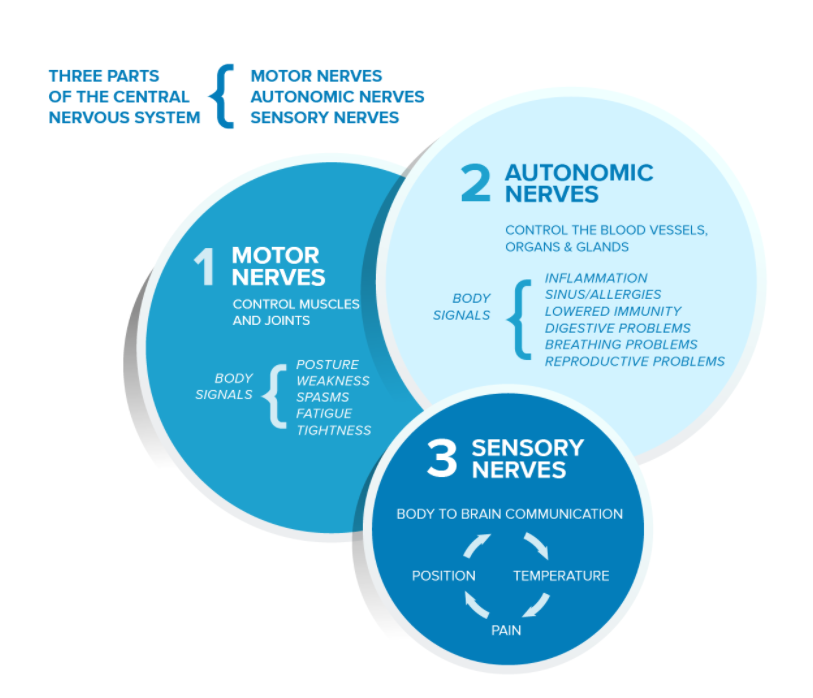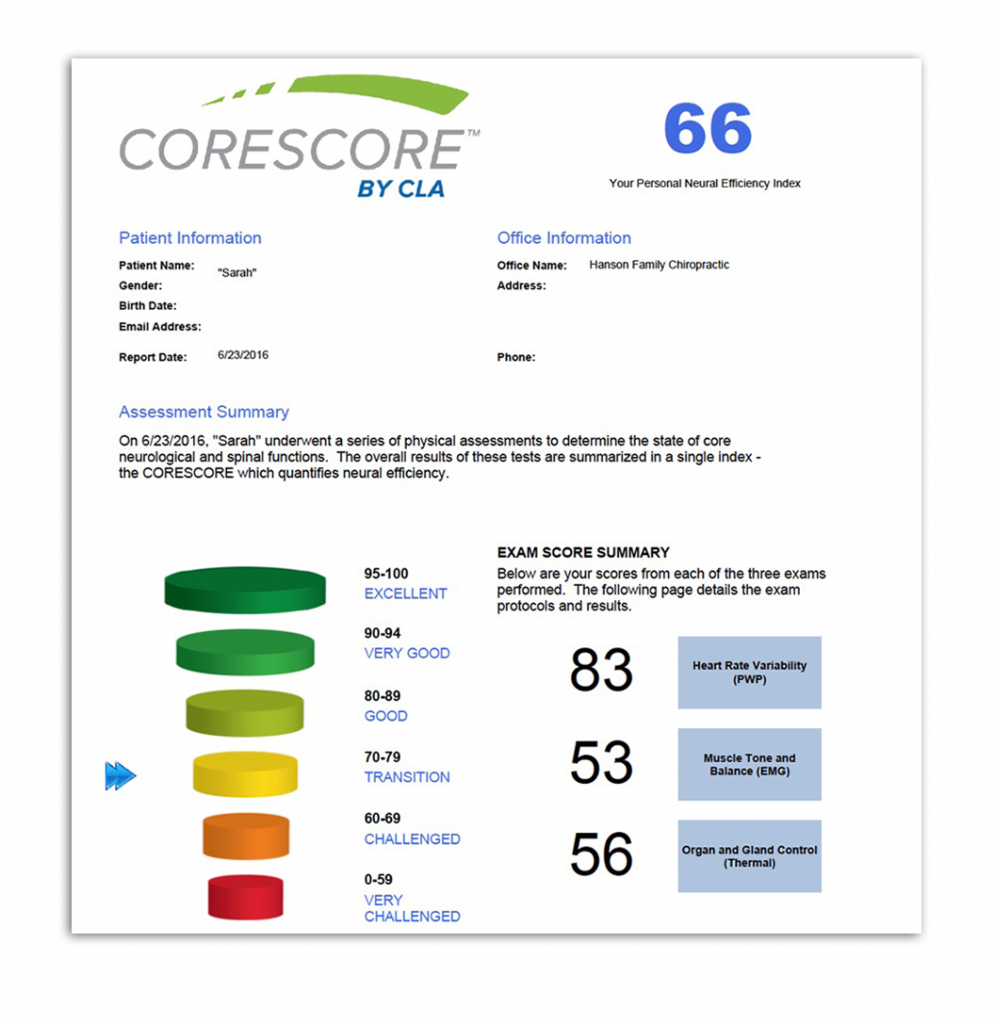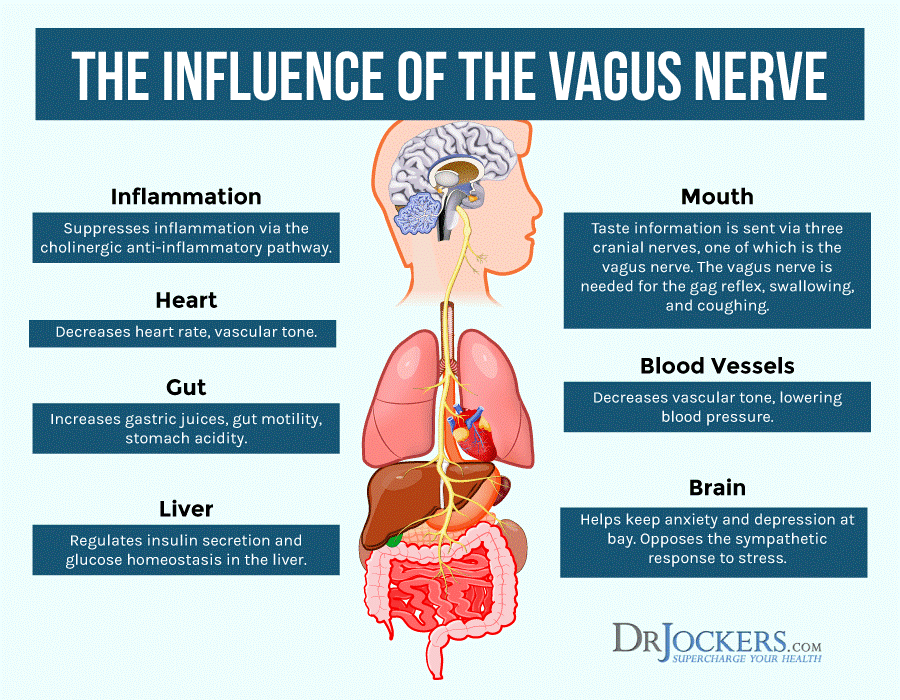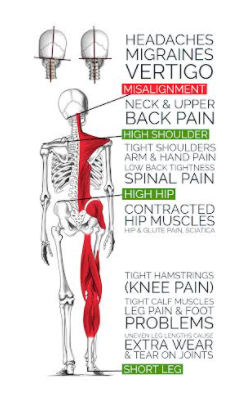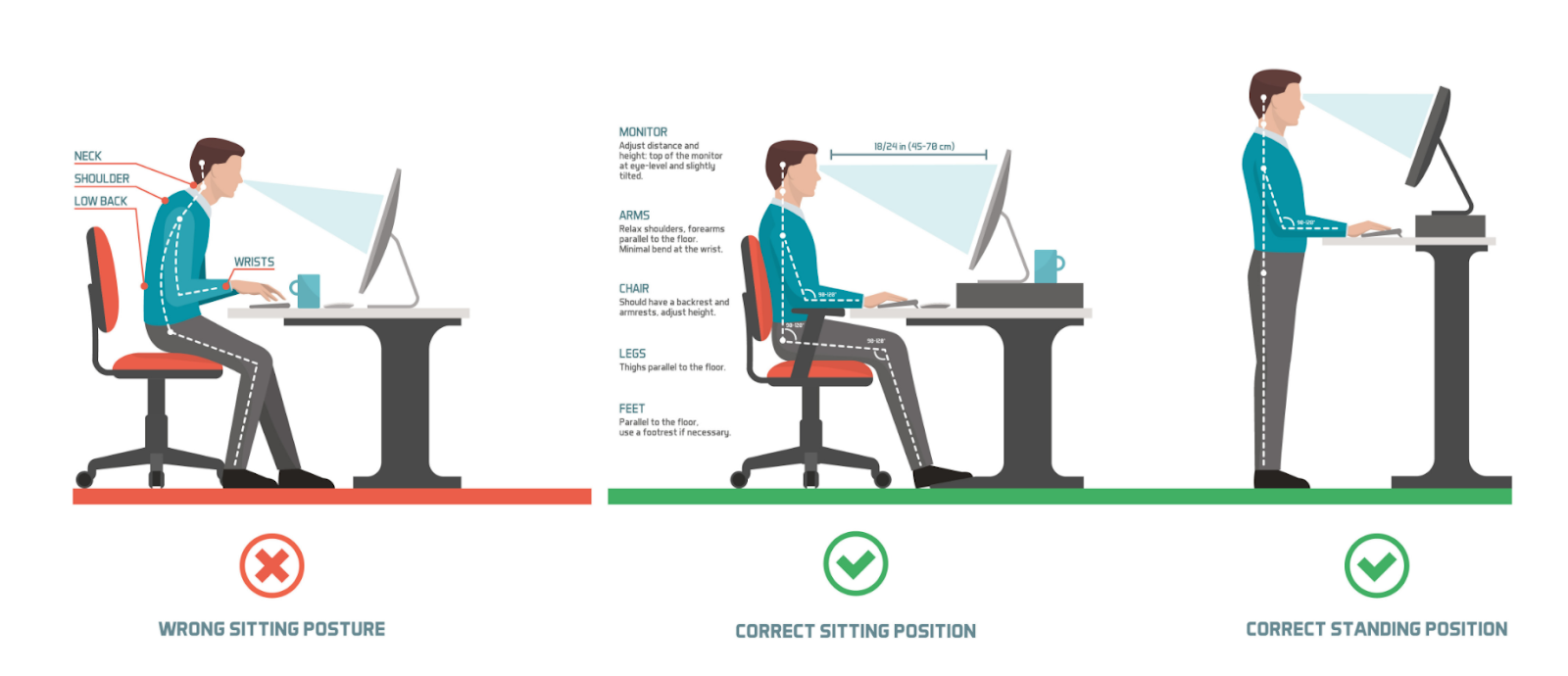I have my CoreScore, NOW WHAT???
Whether you’ve been a patient of HealthWorks for a while or you’ve just begun your journey, you’ve most likely seen your CoreScore.
Your core is designed in two parts. The first part, the Surface EMG, is situated along your torso and is referred to as your “support core”. It keeps you balanced and upright. Your second core, the Thermography and Heart Rate Variability, is like the core of an apple. It runs through the center of your body and is referred to as your “communication core”. It connects your brain to all your body functions. This part of your core keeps you alive, and healthy. It relays messages to and from your brain and your organs and glands.
These tests measure how efficiently your nerve connections inside the core are working. We have measured how signals from the brain flow through the muscles that move and support you (Surface EMG). We have looked to see if tiny temperature variations are occurring along the spine (Thermography)-the nerves that regulate your temperature and control your inner organs.
Finally, we have tested your heart rate to see if your daily stress loads are affecting your ability to cope or how your body is dealing with physical, chemical, and emotional stressors. All the data from these tests are put together and then calculations are made that create your Core Score. Your score tells us how much interference is in your body’s ability to communicate and how we can begin to help you. This is essentially your personal roadmap on where you currently are and what we need to do to get you to where you want to be!
The CoreScore is based on a scale from 0 to 100. The higher the number, the better the communication along those important nerves. If your score places you in the “challenged” category. This means that daily stress has become a constant habit or your body is in a state of constant compensation. The fact that you are feeling symptoms is just another way your body is telling you that it can no longer compensate for the stresses that have been placed upon it. LISTEN TO YOUR BODY!
This tool allows us to objectively measure how well your nervous system is functioning and give you solid answers on how to restore optimal function so you can live to your full potential.
Here’s a great graphic to visualize the components of your CoreScore:
Function vs Feeling
Of course, we care about how patients feel, but we also need to know how they FUNCTION so we look deeper into the nervous system. There are 3 divisions of the central nervous system and it is estimated that a much smaller percentage of nerves is dedicated to the sensation when compared to the functions of movement (motor) or organ and system regulation (autonomic). The scans and CoreScore specifically measure how stress has affected the functions of the nervous system and how adjustments restore the natural tone and control.
Each division of the CoreScore helps us individualize the care we give; again, think of it as a roadmap and every patient has a different journey. You see, daily stresses have a quiet way of settling in and changing a person’s health. Over time, the muscles along the spine can shorten; spinal joints can begin to lock while postures twist and shift. Most importantly, the nerves inside the spine that connect the brain to the body start to be affected. This spinal nerve tension begins to change the core of your body. This is precisely what the CoreScore measures.
Now What?
As we move through care, and new CoreScore scans are done, we can determine the exact direction that your care will take. No two patients heal exactly the same way, and not only is precision our promise, but we also promise personalization of your care based upon objective measures as well as your desires on how you want to proceed.
One of the most common questions we get when going over these progress exams is “how do I get my scores up?” Well, hands down, the most powerful thing you can do is to make sure your atlas and your spine are in proper alignment. WE LIVE THROUGH OUR NERVOUS SYSTEM! So, doesn’t it make sense to keep the most important system of the body healthy? This means, with all of the services we offer at HealthWorks, the most important is your CHIROPRACTIC ADJUSTMENTS, AND HOLDING YOUR ATLAS ALIGNMENT IS A KEY FACTOR! The longer you hold your atlas alignment, the more stable your entire spine becomes.
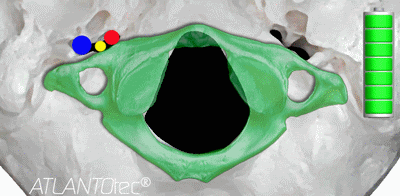
Blue = jugular vein Red = carotid artery Yellow = vagus nerve
How does an atlas misalignment affect Heart Rate Variability?
If you look at the animation above, you’ll notice that the atlas misalignment, primarily the rotational component, will compress the Vagus nerve (as well as the internal jugular vein and the carotid artery). When ANY nerve is compressed, does it function well? NO! Well, the Vagus nerve, is a parasympathetic nerve (rest and digest) and is also called the “wandering nerve” as it extends from the brainstem all the way down to the large intestine! It contains both sensory and motor components and is responsible for keeping the “tone” of the autonomic nervous system. When the Vagus nerve is compressed and/or damaged, it can cause these symptoms:
- difficulty speaking.
- loss or change of voice.
- difficulty swallowing.
- loss of the gag reflex.
- low blood pressure.
- slow heart rate.
- changes in the digestive process.
- nausea or vomiting.
- anxiety and/or depression.
Heart Rate Variability
Heart Rate Variability (HRV) looks at the overall balance and capacity of the Autonomic nervous system. A combination of lifestyle stressors and events constantly “sits on our shoulders” and pushes us down on us while our nervous system consistently tries to resist these stressors. Now, if the external stressors gradually overwhelm your ability to adapt, then it begins to interfere with the nervous system’s ability to compensate and that lower capacity puts the patient in a vulnerable position. They don’t have the necessary reserves to remain resilient in the face of ongoing or upcoming stressors. They have a suppressed recovery response and as the stresses accumulate or continue their health status can decline more rapidly. The statement “getting sicker, quicker” applies here. Let’s face it, stress isn’t going anywhere. Becoming more resilient in the face of what life brings is what is needed to thrive.
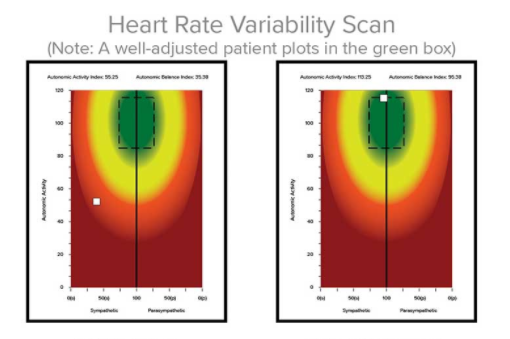
Heart Rate Variability Scan
So, how do I increase my Heart Rate Variability Score?
- Make time for a hobby. This should be something that invigorates and is not draining. It should give you joy and a reprieve from your current stressors. This doesn’t necessarily mean you have to spend hours doing this activity, just that you make it a habit to find time for yourself.
- Read. Reading is calming and can take us to a different place. It opens up new worlds, can be educational, and spark creativity.
- Give yourself a “media detox”. Honestly, the mainstream and social media have done so much damage over the past few decades with their policy of “If it bleeds, it leads”. It’s all bad news whether it’s coming from a news anchor or a keyboard warrior!
- Reduce screen time. This is especially important to those who have office jobs that require hours of time in front of a computer screen. At the very least, stop all screen time at least 1 hour before bedtime AND get some blue light glasses to reduce the impact it has on your brain.
- Journal. Journaling allows you to put down on paper the good, the bad, and the ugly that is going on in your life. It can allow you to release what is causing stress and celebrate what fabulous things are occurring too. A simple “What I’m Thankful For” journal can do wonders.
- Exercise. I know you’ve heard this one before, and you don’t have to be a gym rat, just walking 30-minutes per day can ease overall stress and increase overall health.
- Get some sun! Sun is vital for a happy and healthy life. Getting outside between the hours of 10-5 for 10-20 minutes can make a HUGE difference in the way you feel. It’s free and it’s amazing!
- Breathe from your belly and exhale longer than you exhale.
Thermography

On top of making sure your atlas and your spinal alignment are optimal, giving your organs and glands the building blocks they need for support and repair is essential. Remember, this is the scan that determines the health of the nerves that control all your organs and glands, so keeping them healthy goes a long way to keeping your overall system as healthy as possible!
- Just eat real food. Decrease or eliminate processed and fast foods. If you can’t recognize an ingredient on a label, neither can your body!
- Get a nutritional exam. This exam, although not created to diagnose any specific disease or condition can determine what organs/glands need nutritional support and what foods/supplements and vitamins will do the best job for YOUR body.
- Do periodic Ion Foot Cleanses. This service helps the body eliminate inflammatory toxins that are trapped in the body. The Center for Disease Control reports that up to 85% of all illnesses are caused by toxins and pollutants in our bodies. The human body functions best when the ions are balanced at 80% negative and 20% positive. An ionic detox helps to facilitate the alkalization process through the process of ionization, mainly through the Bohr Effect through the lungs, which removes “free radicals” from the body.
- Drink ½ your body weight in ounces of water daily (no need to exceed 1 gallon).
- Reduce sugar intake. Sugar is extremely inflammatory and will decrease your overall chance of healing and recovery.
Surface EMG
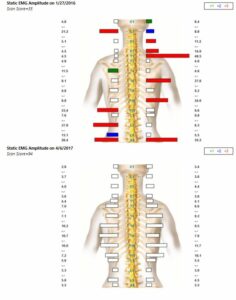
Abnormal and Normal EMG
How do I increase my Surface EMG Score?
Atlas alignment is crucial with this one! Remember, if your atlas is misaligned ALL your postural muscles are miserably contracted on one side of your body creating a constant imbalance from head to toe!
- Perform your cervical and/or lumbar traction for 15 minutes EVERY DAY! We find that it’s best to do this exercise either first thing in the morning or right at bedtime—this will keep it part of your daily routine.
- Perform your assigned exercises daily. Sitting all day at the computer or on our phones has drastically negatively impacted our postural muscles. Engaging them regularly will help to strengthen your spine and even improve your concentration and productivity!
- Stress can wreak havoc on your posture! Think how tight your shoulders and neck become when you are under extreme pressure at work or at home. An Epsom salt bath will not only help to ease your mental stress by increasing your magnesium, but it will ease those tense and tight muscles as well. We ALL deserve a bit of relaxation time every now and then!
- STOP FORCING YOUR HEAD FORWARD AND LOOKING DOWN AT YOUR PHONE! I can’t stress this one enough (hence the ALL CAPS). It’s an actual diagnosis code y’all—text neck!
- Make sure you have a pillow that properly supports your neck and back while you sleep. We have a great handout called “Pillows 101” that we can send you to
test out any pillows you have at home already or if none of those are worthy, how to find one to purchase. - Make sure your workstation, whether at home or at the office is ergonomically correct. A combo sitting/standing desk can be a big help too. Ask us for a prescription to give to your HR department so they can approve one for you!
As with everything we do here at HealthWorks, we are your cheerleaders every step of the way! Whenever you need some advice or encouragement in your healing journey the doctors and staff have multiple ways of communicating exercises and nutritional advice and helping you stay on top of your chiropractic adjustments. ALL YOU HAVE TO DO IS ASK!
Our promise to you
HealthWorks Family Chiropractic is dedicated to a comprehensive and specific approach to taking care of spinal and nervous system needs. Let us help you, your family members, friends, and co-workers find out how taking care of the most important system in the body will create optimal health that will last a lifetime! If we find we’re not the best to help, we promise to refer you to someone who is.
